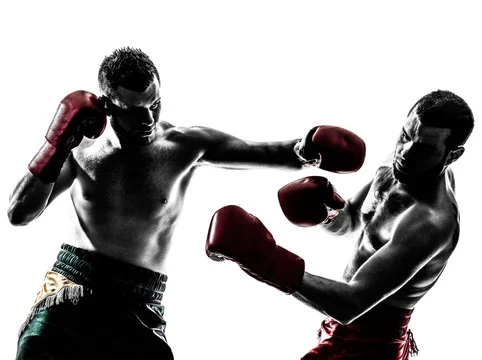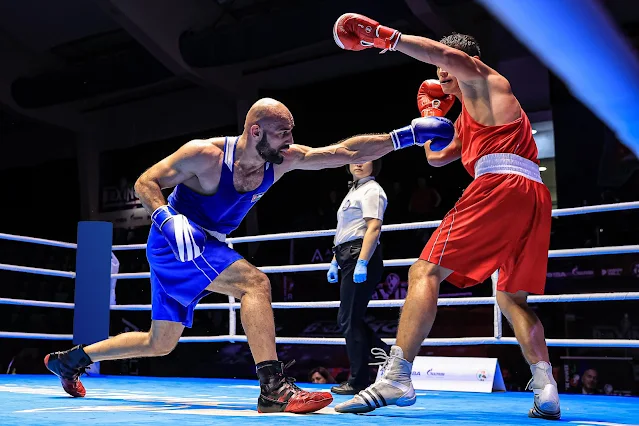Ancient Roots: Boxing in Antiquity
The origins of boxing can be traced to ancient civilizations, with evidence suggesting that it was a popular sport in ancient Egypt around 3000 BC. Early depictions on Egyptian monuments reveal athletes engaged in a form of boxing, wearing primitive gloves and aiming to land blows on their opponents. The sport also found a place in Minoan Crete, where boxing was depicted in frescoes dating back to around 1500 BC.
Ancient Greece is often credited with formalizing and popularizing boxing as a competitive sport. The Greeks introduced rules and regulations, and boxing became a key component of the Olympic Games in 688 BC. However, this early version of boxing was markedly different from the contemporary sport. Fighters wrapped their hands in leather thongs and sometimes wore metal-studded gloves, emphasizing brute force over finesse.
The Romans and the Decline of Boxing
With the rise of the Roman Empire, boxing continued to thrive but underwent changes that reflected the evolving tastes of the time. The sport became more brutal, with matches often lasting until one fighter could no longer continue. The use of leather thongs was abandoned in favor of the cestus, a glove reinforced with metal and sometimes spiked with sharp objects.
Despite its popularity, boxing faced increasing criticism from moralists who deemed it too violent. This sentiment, coupled with the decline of the Roman Empire, led to a gradual disappearance of organized boxing in Europe during the Middle Ages.
The Renaissance and the Gentleman's Sport
Boxing experienced a revival during the Renaissance, particularly in England. The sport shed its more barbaric elements and became a favorite pastime of the English aristocracy. Rules were established to govern fair play, and boxing began to adopt a more structured and regulated form.
The 17th and 18th centuries saw the emergence of prizefighting as a spectator sport. Matches were held at fairs, attracting crowds eager to witness the prowess of skilled pugilists. Rules continued to evolve, and boxing began to resemble the sport we recognize today.
The Marquess of Queensberry Rules: Shaping Modern Boxing
The turning point in the modernization of boxing came in 1867 with the introduction of the Marquess of Queensberry Rules. Named after John Sholto Douglas, the 9th Marquess of Queensberry, these rules established the framework for modern boxing. Among the key innovations were the introduction of gloves, the standardization of round lengths and the boxing ring, and the prohibition of wrestling and other grappling techniques.
The adoption of these rules marked a shift towards a more strategic and technical style of boxing. The emphasis on skill and agility over sheer strength made the sport more appealing to a wider audience and laid the foundation for the rise of professional boxing.
The Rise of Professional Boxing
The late 19th and early 20th centuries witnessed the ascendancy of professional boxing as a major spectator sport. Boxing legends such as John L. Sullivan, Jack Dempsey, and Joe Louis captured the public's imagination, drawing massive crowds to arenas and theaters.
Sullivan, who held the title of world heavyweight champion from 1882 to 1892, became the last of the bare-knuckle champions and the first gloved champion. His fights were major social events, attracting attention from both working-class and elite spectators.
Dempsey, known as the "Manassas Mauler," was a key figure in the Roaring Twenties. His aggressive style and knockout power made him a crowd favorite, and his famous bout against Georges Charpentier in 1921 was the first million-dollar gate in boxing history.
Joe Louis, the "Brown Bomber," held the world heavyweight title from 1937 to 1949, successfully defending it a record-setting 25 times. Louis's dominance in the ring and his impact on race relations in the United States elevated him to legendary status.
The Golden Age: Ali, Frazier, and Foreman
The 1960s and 1970s are often considered the golden age of boxing, marked by the intense rivalry between three iconic heavyweights: Muhammad Ali, Joe Frazier, and George Foreman.
Ali, formerly known as Cassius Clay, burst onto the scene by winning the gold medal in the 1960 Rome Olympics. His flamboyant personality, poetic trash talk, and unorthodox fighting style made him a global sensation. His refusal to be drafted into the military during the Vietnam War and subsequent legal battles added a political dimension to his already captivating story.
Frazier, a relentless and powerful fighter, engaged in three epic battles with Ali. The "Fight of the Century" in 1971, the "Super Fight II" in 1974, and the "Thrills in Manila" in 1975 captivated the world, with Ali emerging victorious in two of the three encounters.
Foreman, known for his fearsome punching power, became the heavyweight champion in 1973 by defeating Frazier. However, in one of the most iconic upsets in boxing history, Ali, considered past his prime, knocked out Foreman in the "Rumble in the Jungle" in 1974.
The Modern Era: Tyson, Holyfield, and Beyond
The late 20th century and early 21st century brought new stars and controversies to the world of boxing. Mike Tyson, with his ferocious style and intimidating aura, became the youngest heavyweight champion in history at the age of 20. His rise to prominence was followed by a tumultuous career marked by legal issues and personal challenges.
Evander Holyfield, a four-time world heavyweight champion, engaged in memorable bouts with Tyson, including the infamous "Bite Fight" in 1997, where Tyson was disqualified for biting Holyfield's ear.
Conclusion
In conclusion, the history and evolution of boxing are a
testament to the resilience and enduring appeal of this ancient sport. While it
has faced numerous challenges and undergone significant transformations, boxing
remains a symbol of skill, courage, and determination, captivating audiences
around the globe for centuries. As it enters a new era, boxing must navigate
the complexities of the modern world while staying true to its rich heritage
and timeless traditions.
FAQs:
What is the history of boxing?
Early years. Boxing first appeared as a formal Olympic event in the 23rd Olympiad (688 BCC), but fist-fighting contests must certainly have had their origin in mankind's prehistory. The earliest visual evidence for boxing appears in Sumerian relief carvings from the 3rd millennium BCC.
Why is boxing called boxing?
The term “boxing” is derived from the term “pugilism” from the ancient Latin word, “pugil” meaning “a boxer”. The pugilism meaning is related to the Latin “pugnus” meaning “fist” and derived from the Greek word “pyx” meaning “with clenched fist”
Is boxing haram or halal?
Boxing is haram for the following reasons: 1- it involves attacking the face; 2- it is a waste of time; 3- it is a harmful sport; 4- it involves wasting money; 5- it has become an excuse for tribalism and nationalism; and 6- it involves uncovering the 'awrah.
What is the history of the boxing ring?
The history of the boxing ring dates back to the ancient Greek Olympic games, where the sport of boxing was a popular event. The Greeks used a circular area, called a skamma, as the boxing ring. The skamma was a raised platform that was surrounded by ropes, and it served as the arena for the boxers to compete.






